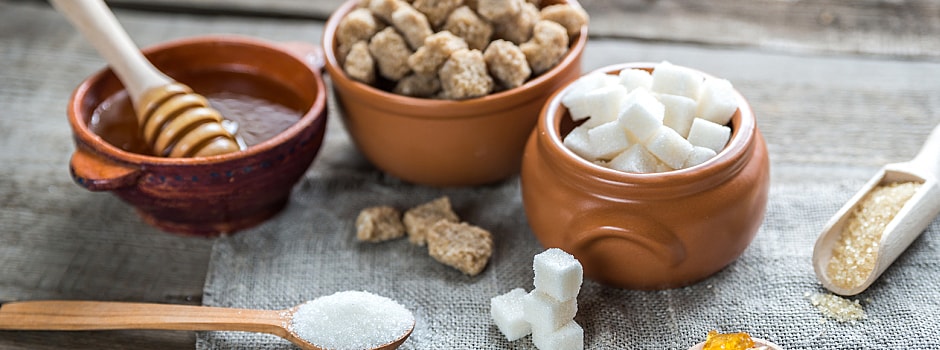What's the deal with sugar? You've been told to avoid it for years, but what types of sugar are health professionals referring to? There's sugar in fruit, so should you avoid that? Let's dive into what sugar is, where it's found, the different types of sugar, and which sources of sugar are the healthiest.
What Is Sugar?
You may think of sugar as a main ingredient in candy, soda, and ice cream. However, any sugar-, starch-, or fiber-containing food is part of the carbohydrate food group. Carbohydrates are one of the three major macronutrient groups and provide your body with most of its energy. When you eat foods that contain carbohydrates, they're broken down into sugar (or glucose) in order to enter the bloodstream and act as fuel for energy production. Therefore, all carbohydrates can be called sugars.
The natural sources of carbohydrates (or sugar) are fruits, vegetables, grains, legumes, nuts, seeds, and dairy products. Cane sugar can be processed and added to foods to improve their taste, such as in candy, fruit juice, ketchup, and soda, and these sugar-containing foods can be broken down into simple and complex carbohydrates.
Complex Carbohydrates
One of the main distinguishing factors between simple and complex carbohydrates is the presence of fiber. Fiber provides bulk to our diet and aids in digestion and overall gut health. These carbohydrates are considered complex because of the fiber and micronutrients (vitamins and minerals) they contain, requiring more work from our digestive tracts. Examples include fruits, vegetables, whole grains, nuts, seeds, and legumes. The additional nutrients in these carbohydrates are what make them so healthy.
Simple Carbohydrates
Simple sugars are easier to digest because they don't contain fiber and they generally offer little additional nutrition. Examples include sweeteners like cane sugar, honey, molasses, and syrups. Candy, fruit juice, jelly, and white bread are also considered simple carbohydrates. Because these carbohydrates rarely contain other micro and macronutrients, they're metabolized rapidly in the body and can quickly raise your blood sugar. This not only provides empty calories, but can cause problems for people with metabolic diseases.
Food Labels
There are four calories in every gram of carbohydrates, regardless of whether it's from sugar, starch, or fiber. If you look at a food label, indented underneath the "carbohydrate" section, you will find "sugar" and "fiber." The amount of sugar and fiber in a given food is included in the total number of carbohydrates listed on the label, so you can multiply the number of grams of carbohydrates, fiber, or sugar by four to figure how many calories are coming from each.
Unfortunately, food labels don't say whether the sugar in a given product is natural or added. However, this difference will be identified on the new food label that the United States Department of Agriculture (USDA) released in May 2016.
Non-nutritive Sweeteners
Where do alternative or non-nutritive sweeteners fit into all of this? Non-nutritive sweeteners, whether they're natural or artificial, provide little or no calories. Sweeteners that are identified as "sugar-free" are only required by the USDA to have 0.5 grams of sugar or less in one serving of the product. Generally, these products contain a lot of added chemicals, and while preliminary research has been done to prove they're safe to consume, more research is necessary to evaluate the safety of their long-term use. Using natural sugar or honey to sweeten your food may be a better route than consuming these highly processed products.
So there's sugar in fruit and vegetables? Yes, but that doesn't mean these complex carbohydrates are bad for you. It's the overconsumption of added sugars and simple carbohydrates that can lead to weight gain and chronic illness. By knowing about the different types of sugar, you can make the best possible food choices for you and your family.



